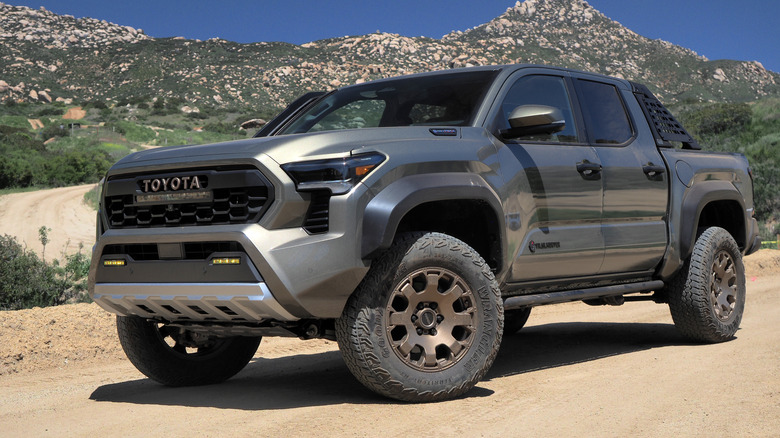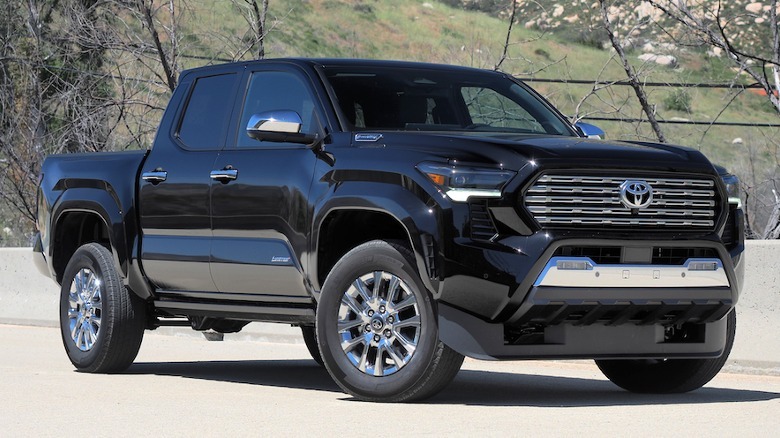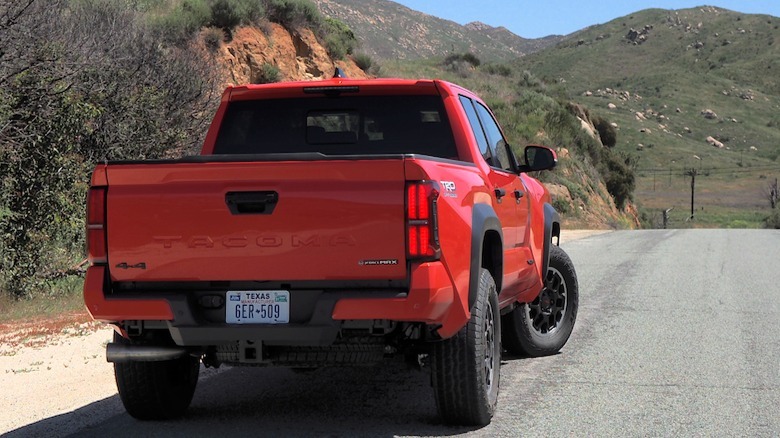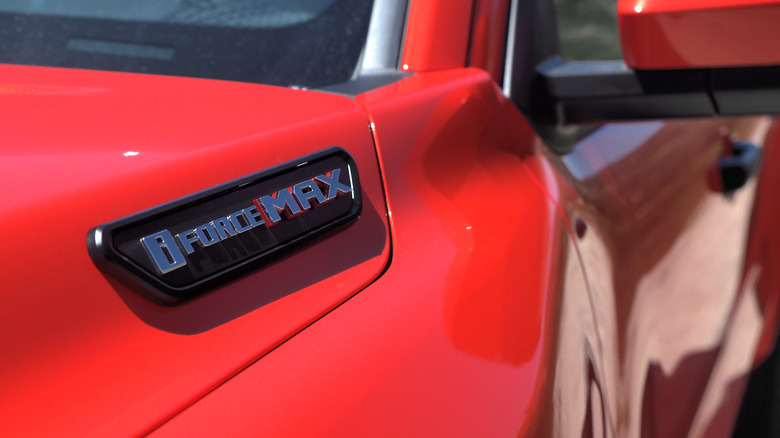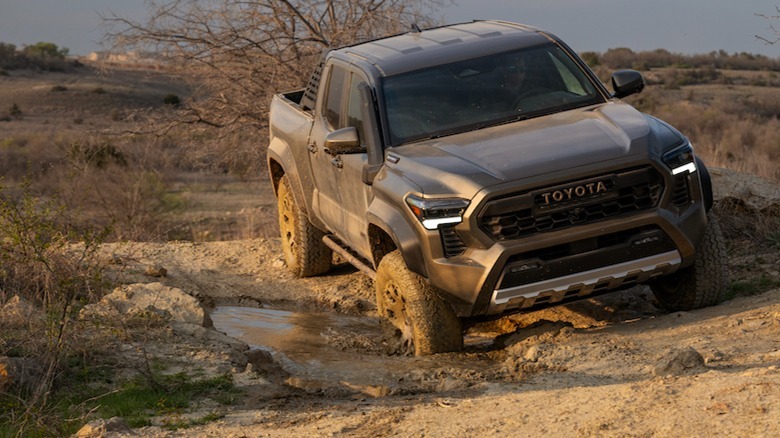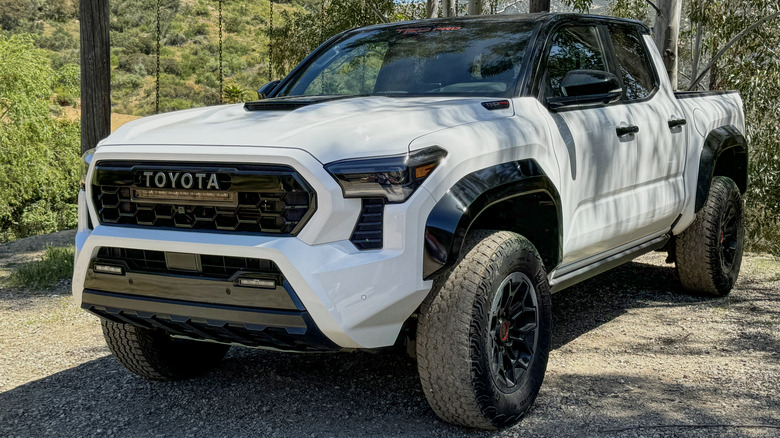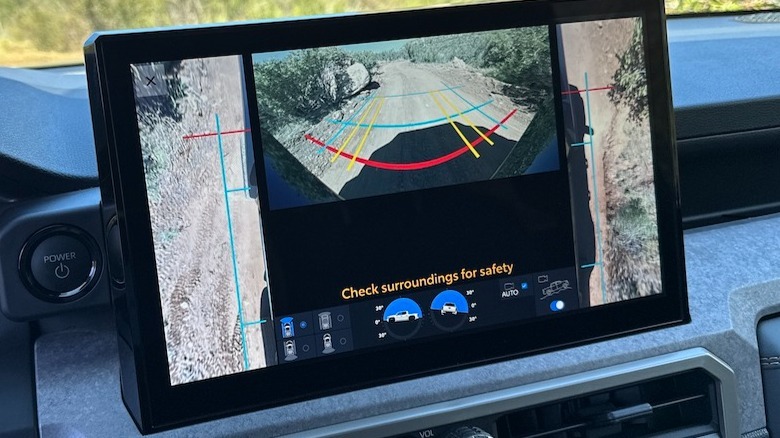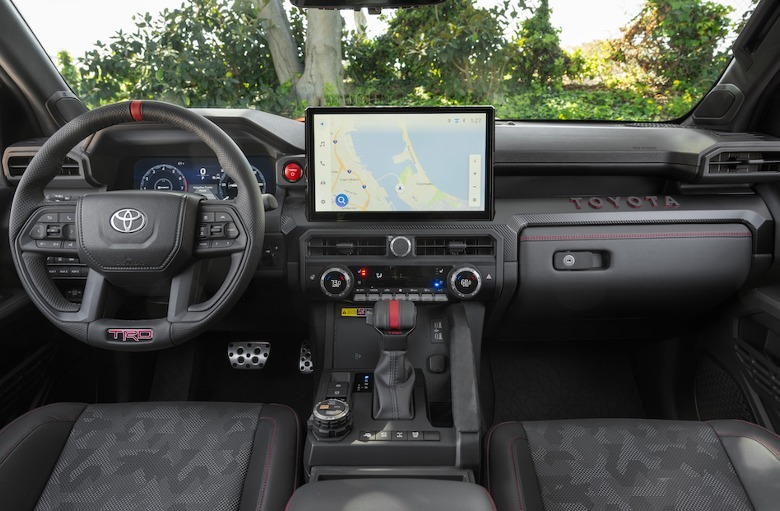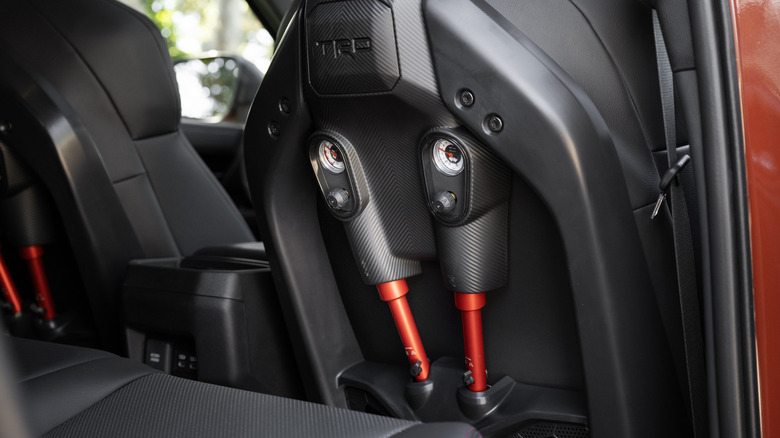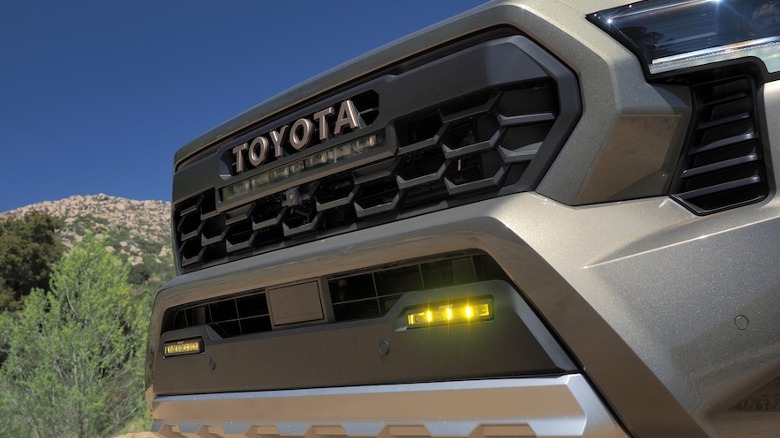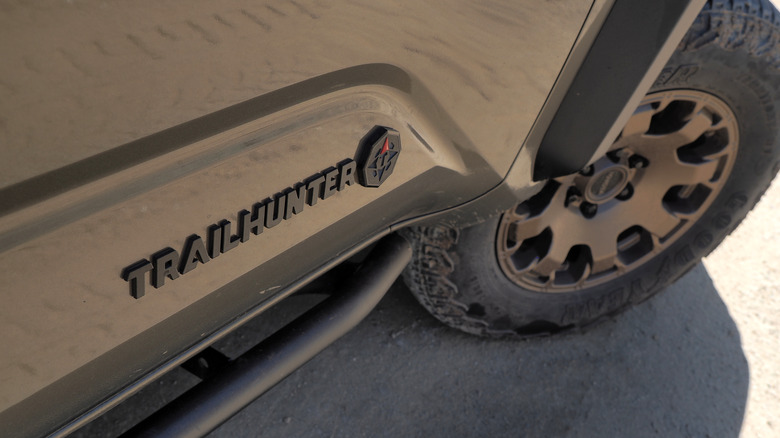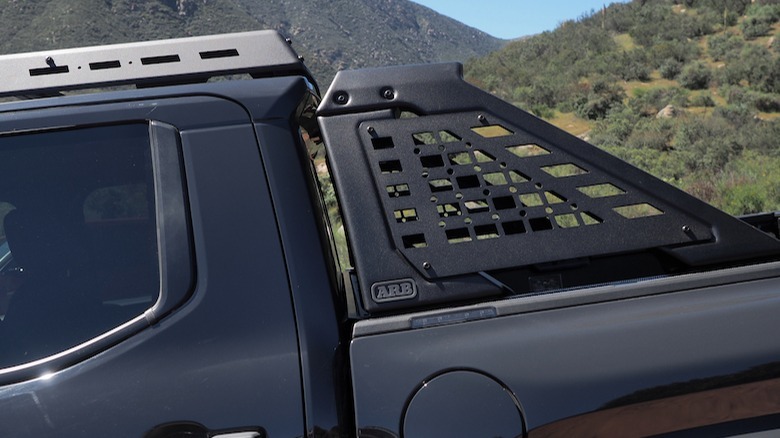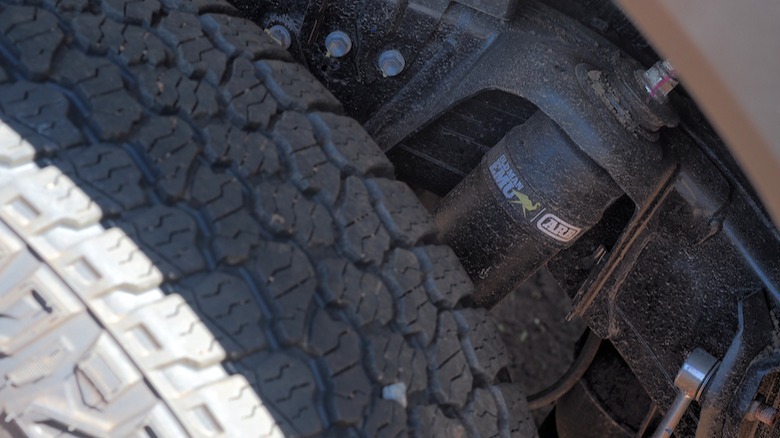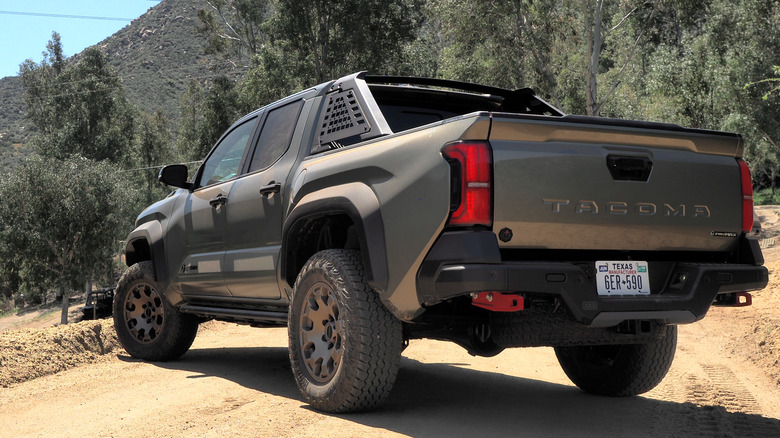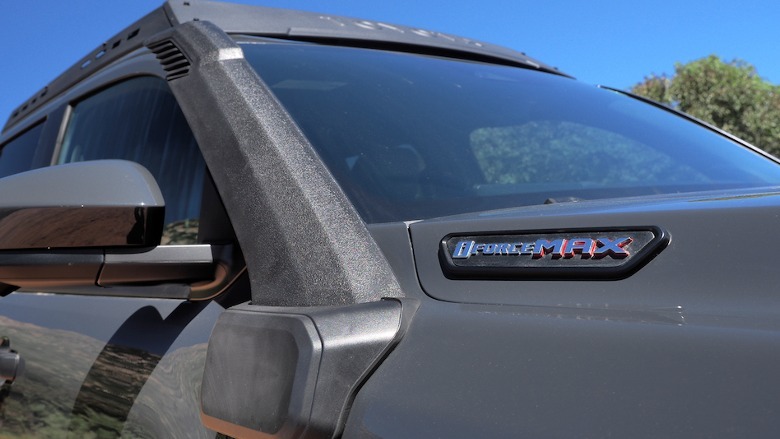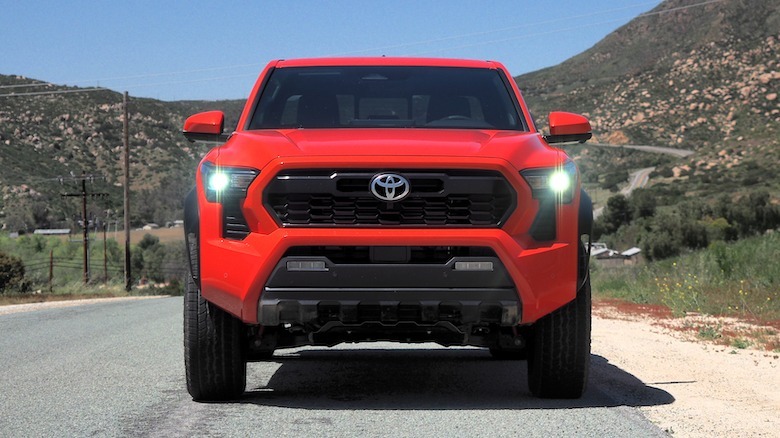2024 Toyota Tacoma Hybrid First Drive: TRD Pro And Trailhunter Tag-Team Off-Road Fun
You can't accuse Toyota of lacking ambition with the 2024 Tacoma. While playing it safe with a perennial best-seller might've been the easy route, the fourth-generation pickup instead set out to not only challenge the best of the competition off-road and on but also to demonstrate how electrification can be better wielded in halo trucks like the TRD Pro and Trailhunter. While the results won't necessarily match everyone's tastes — or budget –some time behind the wheel proved the new Tacoma has more than just badge recognition to recommend it.
Though Toyota uses the same i-FORCE MAX branding across its performance gas-electric hybrid ranges, there are actually a couple of different configurations. The 2024 Tacoma gets the same 2.4-liter inline-four turbocharged gas engine as in the new 2024 Land Cruiser, rather than the twin-turbo V6 that's offered in the latest Tundra.
The combination of gas, an electric motor, a small battery, and an eight-speed transmission adds up to 326 horsepower and 465 lb-ft of torque. That's a comfortable uptick from the maximum 278 horsepower and 317 lb-ft of torque that the non-electrified Tundra i-FORCE provides on certain configurations of the 2024 truck.
There are a couple of caveats to bear in mind. Toyota will only offer the hybrid engine with the Tacoma 4x4 Double Cab configuration and the automatic gearbox; if you wanted a 4x2, a manual transmission, or the XtraCab, you'd need the non-electrified version. It's also only available on some of the more expensive trims: the TRD Sport is the cheapest, from $46,300 (plus destination).
Power, not frugality, is the goal here
As we've seen from other Toyota trucks and SUV hybrids, the goal for the "MAX" is a performance bump rather than a marked frugality improvement. Comparing the TRD Sport 4x4 automatic, for example, the EPA estimate rates that at 19 mpg in the city, 23 mpg on the highway, and 20 mpg combined in non-hybrid form. The hybrid version is rated at 22 mpg city, 24 mpg highway, and 23 mpg combined: a little better, certainly, but nothing groundbreaking.
Where it does pay dividends is in the driving experience, and that's more than simply because a more potent truck drives faster. Certainly, the hybrid Tacoma feels more spritely and eager: it accelerates from a standing start more rapidly, the electric motor helping add low-end torque, and readily overcomes the increase in curb weight.
It's off-road where the advantage really shows itself, however. As with the new Land Cruiser, the injection of electric power meant I never felt like I was short on controllable torque as I inched through the tight, rock-strewn course Toyota had set up where it hosted SlashGear to test out the new pickup. The electric motor sandwiched between the gas engine and the transmission may not be the most potent out there, but its instant reactivity makes judicious application with the accelerator pedal far more straightforward.
The 2024 Tacoma TRD Pro is just plain fun
Like with the Land Cruiser (and the non-hybrid Tacoma), there are plenty of drive assistance systems to make that off-road jaunt more straightforward. CRAWL Control, for example, acts like low-speed cruise control: five sub-10 mph speed settings handle forward momentum, leaving the driver to focus on steering. There, the Tacoma's bevy of cameras — including one at the front, which automatically beams its picture to the infotainment display when it senses you're cresting a hill — come in handy since sight lines otherwise aren't exactly helped by the truck's bluff edges.
With better visibility of the mud and dirt ahead, though, and the keys to a 2024 Tacoma TRD Pro, things get a whole lot more silly. Priced from $63,900 (plus destination), the most expensive model in the Tacoma line-up is all about going fast, regardless of what road surface you find yourself on. That's involved upgrades both inside and out.
2.5-inch Fox Internal Bypass shocks front and rear get adjustable compression, and there's a standard stabilizer with a disconnect mechanism. 18-inch TRD Pro alloy wheels get 33-inch Goodyear Territory R/T tires as standard, and there's extra underbody protection, including an aluminum front skid plate and reinforced rocker shielding. Inside, the TRD Pro is the only Tacoma to get Toyota's new IsoDynamic performance seats.
Magic IsoDynamic seats
Point the 2024 Tacoma TRD Pro at the horizon and floor it, and you can live the bulk of your Baja dreams with no problems whatsoever. The hybrid drivetrain — which comes standard — keeps the speed coming, while the faster steering ratio leaves it feeling nimble and agile. Would a set of fancy Multimatic DSSV dampers like Chevrolet offers on the latest Colorado ZR2 be even better at soaking up poor-quality surfaces? Maybe, but then again, Chevy doesn't have Toyota's magic seat tech.
While nothing particularly out of the ordinary to look at from the front, peer at the back of the IsoDynamic seats, and you'll see their upgrades. Air-over-oil shock absorbers act like person-scale dampers for the driver and front passenger, with both lateral and vertical movement to stabilize the head and neck. Jolts and bangs that should be genuinely uncomfortable are suddenly barely a problem at all, though it's not just about overall comfort. By keeping your head stabilized, it's easier to track where you're going and what the next straight or turn will entail.
They're standard on the TRD Pro, complete with heating and ventilation; the only real downside is that the bulkier chair back assembly eats into the rear legroom. Sadly, they can't be added to the 2024 Tacoma Trailhunter (from $62,900 plus destination), but that's because the other high-profile addition to Toyota's truck lineup isn't intended for high-speed hi-jinx.
The 2024 Tacoma Trailhunter is made for the wilderness
Instead, it's Toyota's response to the rising interest in overlanding: effectively low-speed, tactical driving while hauling plenty of gear, rather than the Baja-pace mayhem of the TRD Pro. So, in addition to the i-FORCE MAX as standard, there's a 2,400-watt, 20-amp inverter with outlets in the standard Double Cab and in the bed that can be used while the truck is being driven, and a full tank of gas should keep it running for up to 48 hours.
There are also some of the more obvious upgrades that Toyota saw overland enthusiasts doing to their existing Tacomas. Both 5- and 6-foot beds are available, while rock rails and various high-strength steel skid plates are standard. A 20-inch LED light bar and white/yellow RIGID Industries LED fog lamps are also included, with a unique Trailhunter-spec grille.
Underneath, there's ARB Old Man Emu 2.5-inch suspension, with forged monotube shocks equipped with rear remote reservoirs. A steel rear bumper promises both recovery points and compatibility with Toyota's parking and other sensors, and there's a sports bar with removable MOLLE panels. Options include a full bed rack and plenty of other extras, though Toyota says it has already been collaborating with some of the high-profile aftermarket accessory makers to ensure they'll be ready to go with add-ons when the Trailhunter arrives in U.S. dealerships around June.
Expanding the new Tacoma's talents
On the road, the Trailhunter feels much like any other Tacoma, albeit with a little extra compliance dialed in with the special shocks and the 18-inch wheel/33-inch Territory R/T tire combo shared with the TRD Pro. It certainly turns heads, finished in a new Bronze Oxide paint with matching bronze-finish alloys. Open the front passenger side window and floor the gas pedal, and the distinctive wheeze of the snorkel-like high-mount air intake fills the cabin. You'll either find it charming or ridiculous (just note that Toyota isn't claiming it'll improve the Tacoma's wading talents and, indeed, isn't giving any water-fording measurements for any variant of the truck).
Given the price tag and the standard feature set, Toyota isn't expecting every Tacoma buyer to opt for the Trailhunter (or, for that matter, the TRD Pro). About 3% of all Tacoma sales are expected to be the overlanding-ready model (and about 5% TRD Pro), making it more a mood board of what could be done with the new pickup, rather than a specific recipe for how it should. That said, developments for the Trailhunter have shaped the rest of the Tacoma range when it comes to things like standardizing accessory mounting: even versions of the truck that lack the extra sidebars, for example, still get the holes should an owner want to mount some later on.
It's that foresight which helps the latest-generation Tacoma stand out, and picks up the torch from where the more affordable non-hybrid models left off. They demonstrated just how much Toyota had done to instill refined on-road manners in its midsize truck without compromising on off-road potential. The arrival of the hybrid MAX engine and halo configurations like the TRD Pro and Trailhunter only extend that creative scope and help justify the not-insignificant prospect of a $60k+ Tacoma.
